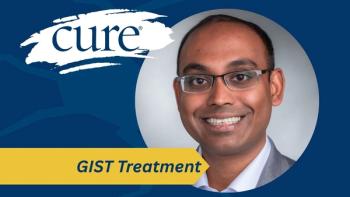
- Extraordinary Healer® Volume 17
- Volume 17
Every Day, She Helps Make Things Better for Patients With Cancer
An interview with Kerry O’Neil, B.S.N., RN, OCN, finalist for the 2023 Extraordinary Healer® award.
Many nurses who choose oncology as a career have had cancer or had a relative or friend with the disease. Kerry O’Neil, B.S.N., RN, OCN, took a more circuitous route.
After graduating from Fitchburg State University in Massachusetts, her roommate’s mother invited her to come to California for a visit, so O’Neil and five of her friends headed west. The mother lived in a one-room apartment, so the girls were dispersed to neighbors’ homes.
The neighbor O’Neil was staying with encouraged her to explore career options, saying she could stay as long as she liked. She’d become interested in nursing while in Massachusetts, so she took her nursing boards and signed up at Hoag Hospital, a local community facility in Newport Beach. There were quite a few nurses with associate degrees at the time, but not that many with bachelor’s degrees.
O’Neil remembers: “California was kind of desperate for nurses with a bachelor’s degree, so they asked me where I wanted to work. That caught me off guard because it’s not a question many new grads are asked.”
O’Neil’s most difficult class in college had been oncology, and although she’d passed the final, she realized she didn’t really understand all she’d been taught. “So I thought, ‘Well, I’m a new grad and I’m supposed to be learning,’ so I asked them to put me on the oncology floor. I ended up with amazing preceptors who took me under their wing and taught me everything they could. And they were very nurturing and so supportive,” she says.
After a few years after O’Neil started working as an inpatient nurse, cancer treatment had started to migrate to outpatient clinics. So O’Neil moved to the outpatient world and worked in a community clinic. Two years ago, City of Hope opened a clinic in Newport Beach, and oncology patients no longer needed to drive all the way to Los Angeles for their treatments. O’Neil applied to be an oncology infusion nurse at the new facility, and the center countered with an offer for a supervisory position. She accepted with one condition: that she could still continue to do patient care.
“Generally, when you get into a management position, you’re no longer working in the clinical arena,” O’Neil says. “I’m a little unusual in that I still give patients their chemotherapy, have relationships with them, and I’m still on the floor with the other nurses. I like having that patient interaction; I don’t think I could do it if I didn’t have that, because that’s where my heart is — it’s why I got into nursing in the first place.”
When City of Hope added another clinic, O’Neil became nurse manager for both. “I’m in charge of all the nurses and clinical staff within the two centers, which is quite a bit of responsibility,” she notes. Another challenge is the speed at which technology is changing the field of oncology. But O’Neil got into the specialty because of the opportunity to learn all that it offered, and she still enjoys the challenge.
“You’re learning so much every single day, and there are always so many new things coming down the pike,” she says. “Oncology nurses have been able to see those changes and how it affects their patients. It means we have to stay on top of our game all the time.” One role O’Neil particularly enjoys is that of patient educator, especially to patients with a new diagnosis. Anyone who has received a cancer diagnosis is naturally in shock, and it’s crucial to have someone there to explain things. “You let them know why they’ve been given certain medications and how they work,” O’Neil says. “Much of a patient’s anxiety can be alleviated just by letting them know what’s going to happen to them.”
That education often pays off when patients begin treatment. “The first treatment is always stressful.” O’Neil says. “But it’s so nice when they come back for the second one saying, ‘Oh, it wasn’t as bad as I thought it would be. I took the medication as you told me to, and it made things better.’”
For more news on cancer updates, research and education, don’t forget to
Articles in this issue
over 2 years ago
A Ray of Sunshine on the Oncology Wardover 2 years ago
Combining Oncology Teaching With Compassionover 2 years ago
Compassion Through Kindness in Cancer Careover 2 years ago
The Oncology Nurse Who Radiates Positivityover 2 years ago
Finding Peace Amid the Fear of Cancerover 2 years ago
My Magnificent 'Mom' at the Cancer Centerover 2 years ago
Making Magic Happen in Cancer Careover 2 years ago
An Oncology Nurse Who Is Always Glad to Answer Callsover 2 years ago
An Oncology Nurse Who Is One of a Kind, Kind to Everyoneover 2 years ago
A Cancer Nurse Heals the Body, Mind and Soul




